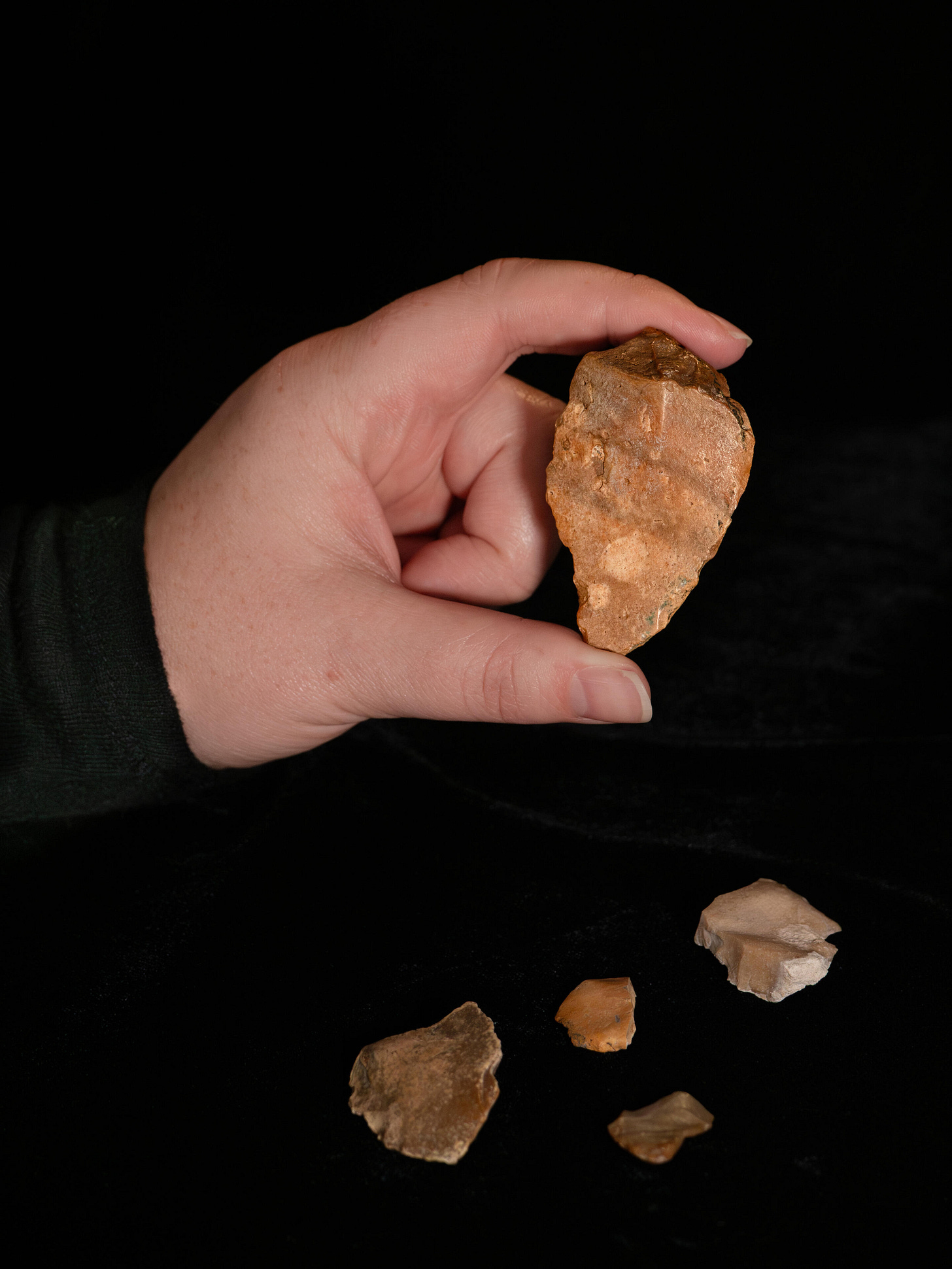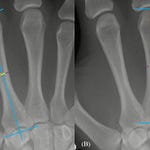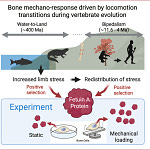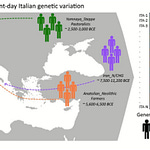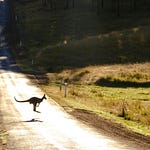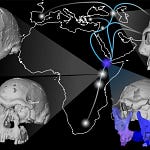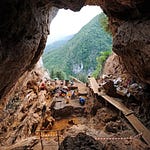The Island That Time Forgot
Rising from the marine depths between Borneo and the Banda Sea, the island of Sulawesi holds clues to one of the least understood chapters in the human story. Though modern humans didn’t arrive until the Holocene, archaeologists have long suspected that earlier hominins reached these shores far earlier. Now, stone tools unearthed1 from the island’s southern interior point to an astonishing timeline: hominins were shaping tools and living on Sulawesi at least 1.04 million years ago.
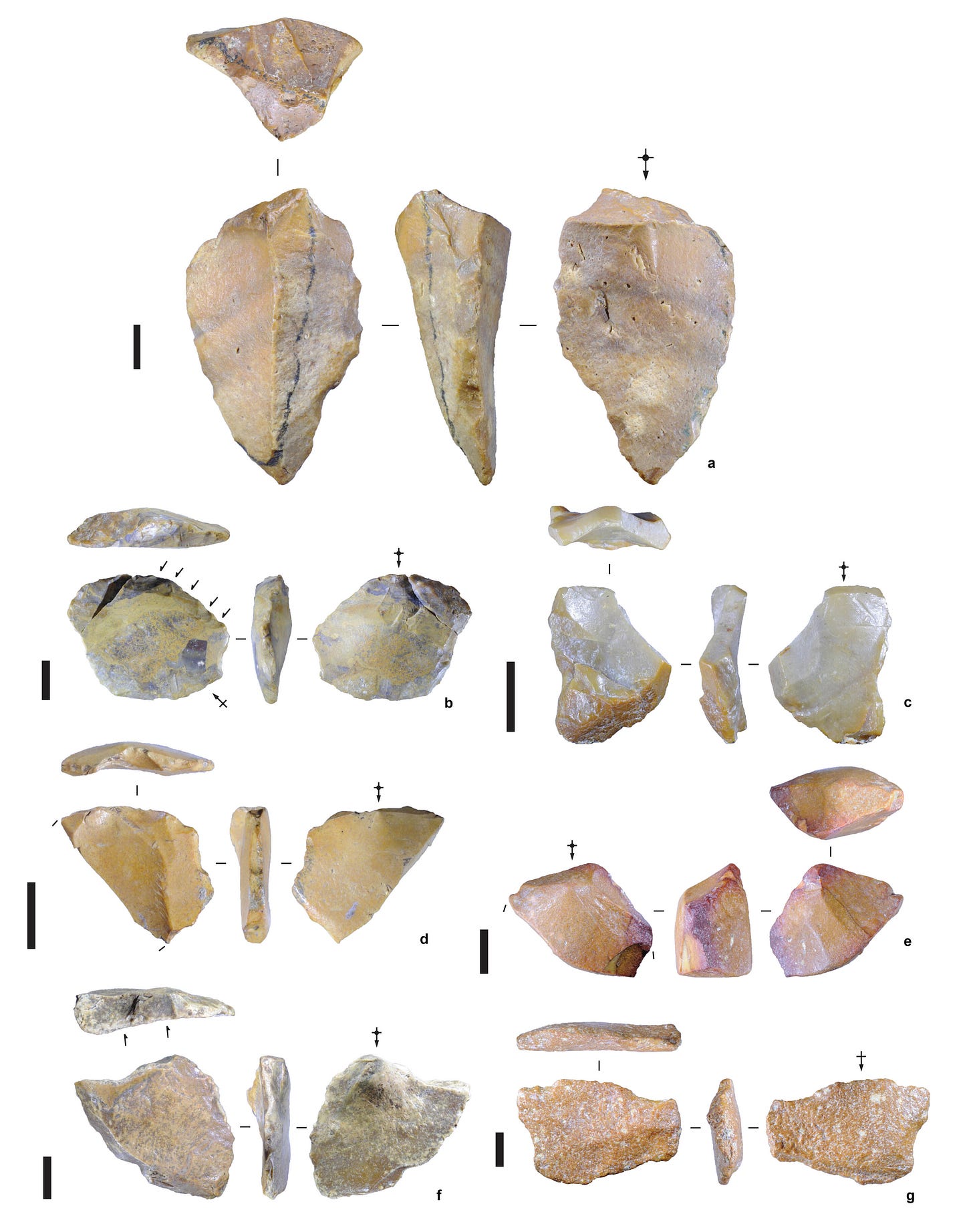
The evidence comes from the Calio site in the Walanae Depression, where researchers from Indonesia’s National Research and Innovation Agency (BRIN) and Griffith University in Australia have excavated flakes of stone chipped from river pebbles. These tools are unremarkable in shape, but exceptional in implication. Their age, determined through paleomagnetic analysis of the surrounding sediments and dating of a fossilized pig molar pushes back the presence of hominins on Sulawesi by nearly a million years.
This makes the Calio artifacts the oldest archaeological evidence yet found in Wallacea, the biogeographic transition zone between Asia and Australia. More importantly, they suggest that these early humans had the technological or cognitive capacity to cross significant ocean gaps long before Homo sapiens ever built a boat.
“It’s a significant piece of the puzzle, but the Calio site has yet to yield any hominin fossils,” said Adam Brumm, co-leader of the study and professor at the Australian Research Centre for Human Evolution.
“So while we now know there were tool-makers on Sulawesi a million years ago, their identity remains a mystery.”
Crossing the Wallace Line
Sulawesi lies east of the Wallace Line, a deep-sea boundary that even today separates Asian and Australasian ecosystems. On one side: tigers, elephants, and primates. On the other: marsupials, birds of paradise, and giant flightless birds. The Wallace Line was once thought to be impassable without boats, but this discovery suggests that archaic hominins had crossed it much earlier than expected.
Previously, the earliest firm evidence of hominins in Wallacea came from stone tools found on Flores, dating to about 1.02 million years ago. That site eventually led to the discovery of Homo floresiensis, the famously diminutive “hobbits” of Liang Bua cave, who stood barely over a meter tall. More recent work at the site of Talepu, also in Sulawesi, had placed hominin activity there at around 194,000 years ago.
The Calio site predates both.
“This discovery adds to our understanding of the movement of extinct humans across the Wallace Line, a transitional zone beyond which unique and often quite peculiar animal species evolved in isolation,” Brumm said.
But unlike Flores, where fossils of H. floresiensis and even their ancestors have been recovered, Sulawesi has yet to yield a single bone. The lack of skeletal evidence makes it difficult to identify which hominin lineage left these tools. Were they Homo erectus? Were they related to the Flores hobbits? Or might they represent an entirely unknown hominin?
Island Lab of Evolution
Sulawesi is no small rock in the ocean. It is more than 12 times the size of Flores, with dramatically diverse environments ranging from highland forests to lowland river valleys. In theory, a group of hominins isolated on such a large landmass for over a million years could have evolved in unpredictable ways.
“Sulawesi is a wild card—it’s like a mini-continent in itself,” Brumm remarked.
“If hominins were cut off on this huge and ecologically rich island for a million years, would they have undergone the same evolutionary changes as the Flores hobbits? Or would something totally different have happened?”
Island dwarfism, a well-known evolutionary phenomenon, may explain the small body size of H. floresiensis on Flores. But would Sulawesi's vastly different environmental pressures have produced giants, grazers, or cognitively unique hominins?
Until bones are found, these remain open questions.
Tools Without a Maker
The Calio tools are small, sharp flakes; simple in form, but rich in implications. Produced by striking river pebbles with other stones, the technique mirrors that used by Homo erectus elsewhere in Southeast Asia. But without fossil remains, these tools stand alone as silent witnesses to a vanished people.
Similar findings in the Philippines and on Timor have shown that hominins likely crossed significant marine barriers repeatedly, whether by accident or by intent. Wallacea, once considered a fringe zone, now looks more like a central corridor in the story of archaic human movement across Asia.
A Mystery in the Making
The Calio site, despite its modest yield, just seven tools so far, is now one of the most tantalizing hominin localities in Asia. Its importance lies not in its size, but in its age and geography. It reshapes how archaeologists think about early human dispersal, and it opens the possibility that other hominin species, previously confined to the mainland, ventured far beyond what their skeletal anatomy alone might suggest.
And yet, the hominins of Sulawesi remain nameless.
Related Research
van den Bergh, G. D., Meijer, H. J. M., Brumm, A., et al. (2016). The Homo floresiensis remains from Liang Bua, Flores: A review. Journal of Human Evolution, 95, 1–24. https://doi.org/10.1016/j.jhevol.2016.02.003
Archaeology of Flores and Early Hominin Dispersal: Brumm, A., et al. (2010). Hominins on Flores, Indonesia, by one million years ago. Nature, 464(7289), 748–752. https://doi.org/10.1038/nature08844
Ingicco, T., et al. (2018). Earliest known hominin activity in the Philippines by 709,000 years ago. Nature, 557(7704), 233–237. https://doi.org/10.1038/s41586-018-0072-8
Westaway, K. E., et al. (2017). An early Homo sapiens presence in Sumatra 73,000–63,000 years ago. Nature, 548(7666), 322–325. https://doi.org/10.1038/nature23452
Brumm, A., Hakim, B., et al. (2025). Hominins on Sulawesi during the early Pleistocene. Nature. https://doi.org/10.1038/s41586-025-09348-6
Hakim, B., Wibowo, U. P., van den Bergh, G. D., Yurnaldi, D., Joannes-Boyau, R., Duli, A., Suryatman, Sardi, R., Nurani, I. A., Puspaningrum, M. R., Mahmud, I., Haris, A., Anshari, K. A., Saiful, A. M., Arman Bungaran, P., Adhityatama, S., Muhammad, P. H., Akib, A., Somba, N., … Brumm, A. (2025). Hominins on Sulawesi during the early Pleistocene. Nature, 1–6. https://doi.org/10.1038/s41586-025-09348-6


